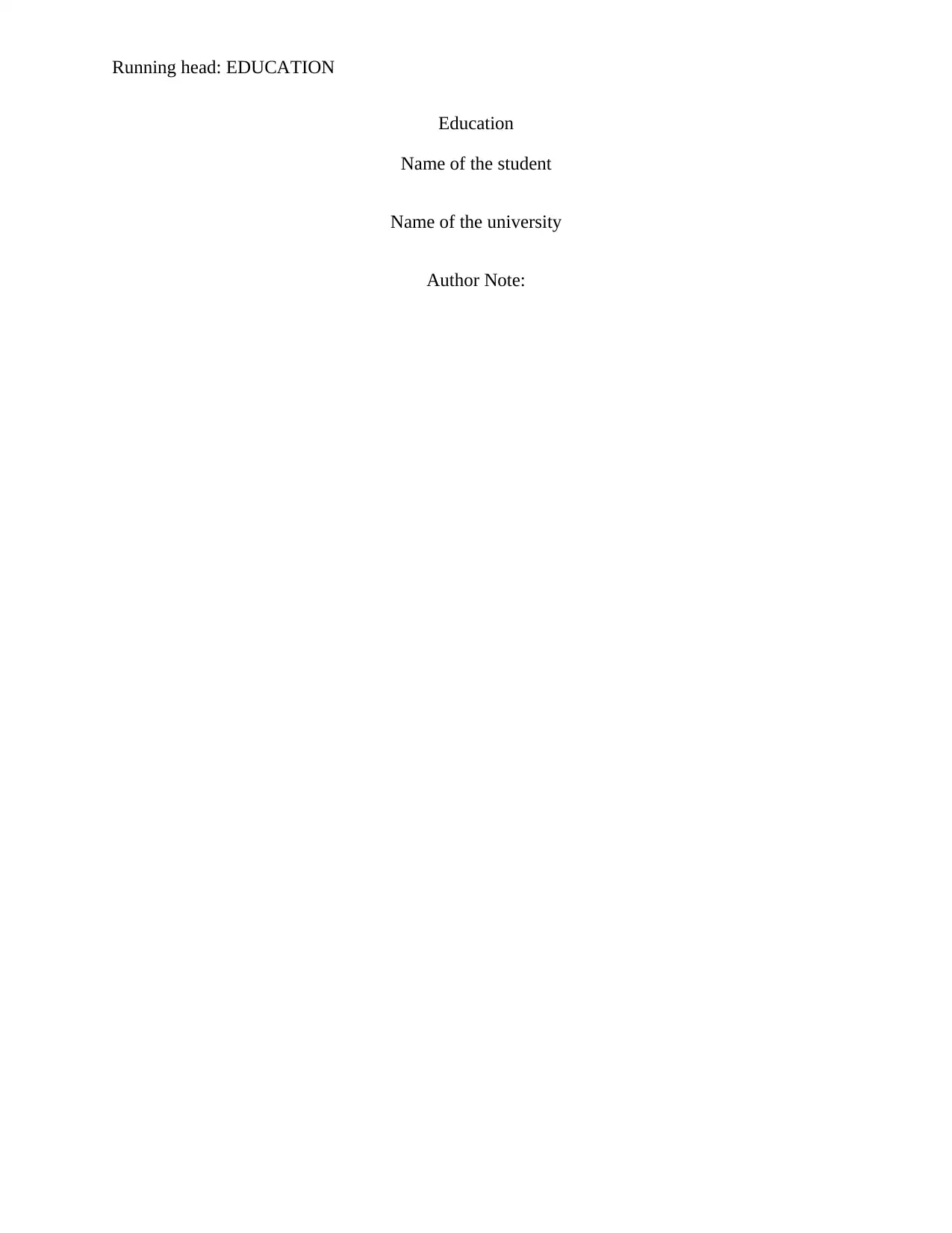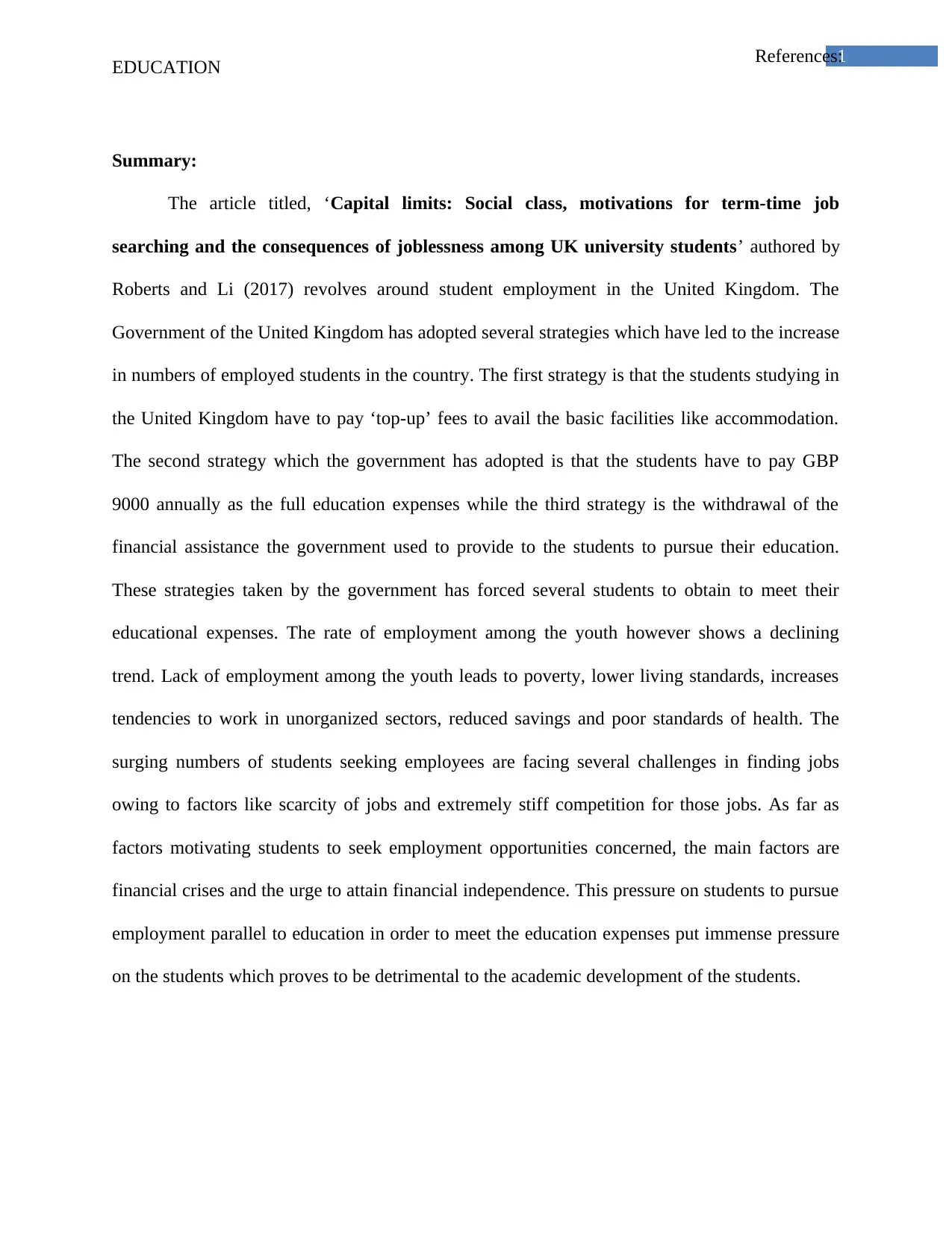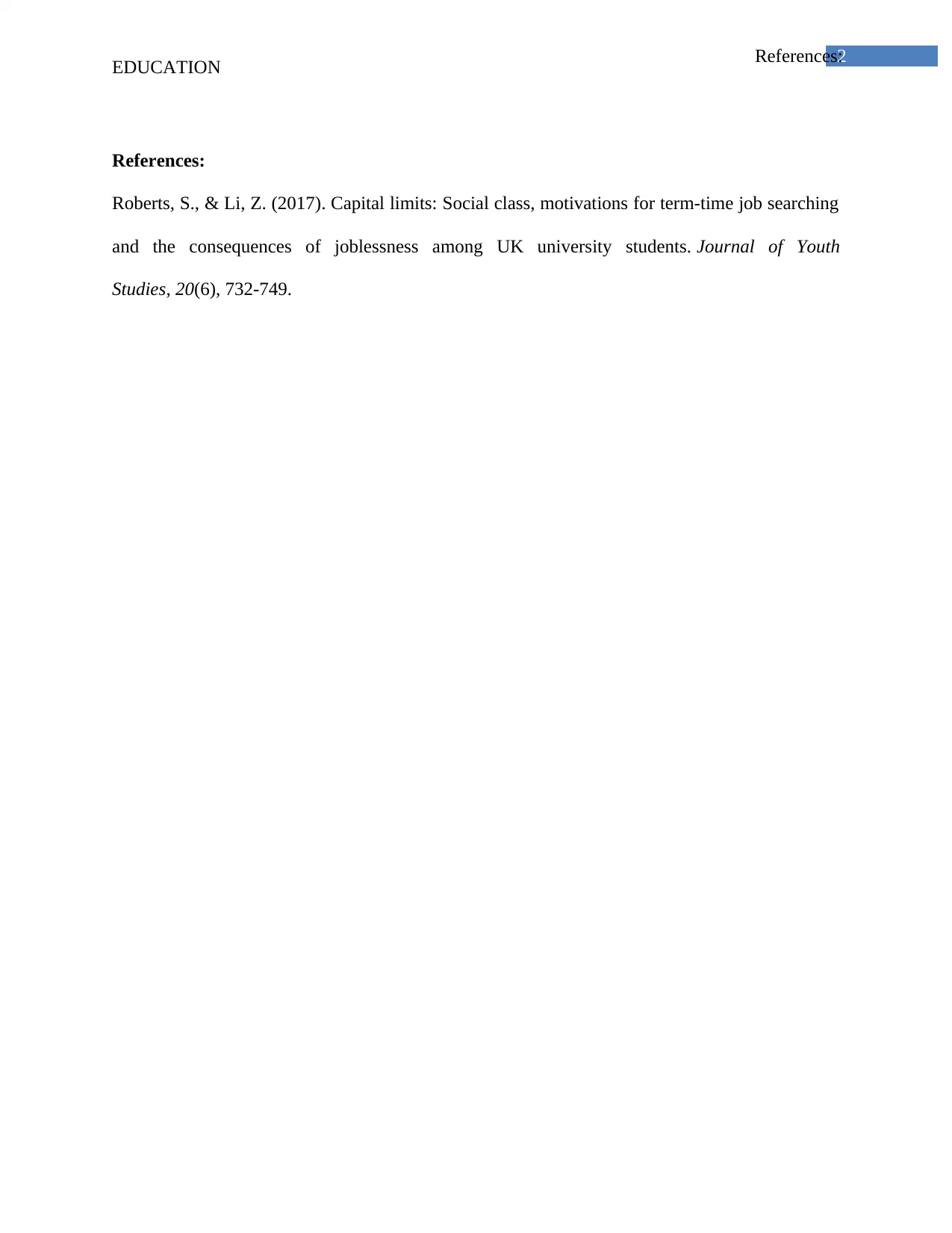Social Class, Job Searching, and UK Student Employment
VerifiedAdded on 2022/09/26
|3
|364
|36
Journal and Reflective Writing
AI Summary
This assignment delves into the landscape of UK student employment, examining the interplay of social class, job searching motivations, and the consequences of joblessness. Based on the research by Roberts and Li (2017), the paper highlights the financial pressures faced by students, including the rising costs of education and the decline of government financial aid. These factors compel many students to seek employment, often leading to challenges in finding jobs due to limited opportunities and high competition. The study further explores the impact of these pressures on students' academic performance, underscoring how financial constraints and the need to work can be detrimental. The research utilizes a Bourdieusian framework to analyze interviews, revealing how social and cultural capital influence employment outcomes and how access to material and economic resources significantly shapes both the experience of unemployment and the overall university experience, reinforcing social class divisions.
1 out of 3








![[object Object]](/_next/static/media/star-bottom.7253800d.svg)